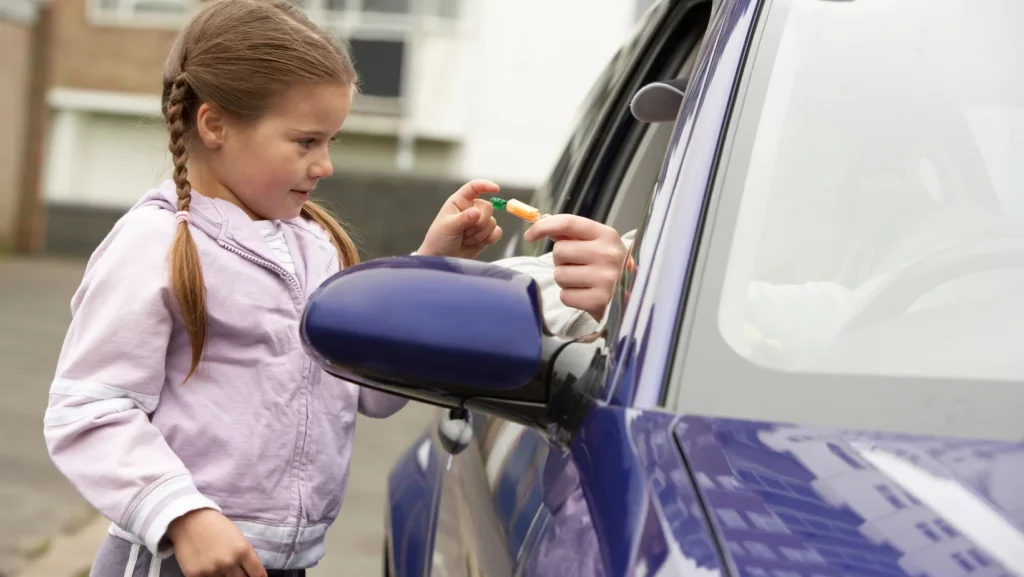
It’s hard to believe, but strangers are out there—around every corner, lurking in parks and playgrounds. And even though things have been creepier and scarier lately, teaching our kids about the potential danger of interacting with strangers has always been important. As parents, we must guide our children to stay safe in a world filled with people who may not have their best interests at heart. In this article, we’ll look at what stranger danger means for kids today and how you can help your little ones stay safe from harm!
Are you worried about your Child’s safety?
We understand how frightening it can be to think about the potential dangers that are out there. But we also believe in empowering our children with the knowledge they need to stay safe and make smart choices. We’re here to help you teach your kids about Stranger Danger.
Our strategies aim to provide comprehensive education, so your kids know what to do if a stranger approaches them, whether on their way home from school or while playing at the park. They will gain confidence as they learn to stay out of harm’s way and feel more secure when walking down the street or playing on playgrounds alone or with friends.
Go on reading to learn more about keeping your child safe from strangers and danger!
What is Stranger Danger and Why Does it Matter?

Stranger danger is a term that describes the potential threat of harm from strangers. It can refer to people who appear suspicious, such as those in unfamiliar places or acting strangely. It also includes those trying to take advantage of our kids by offering them gifts or money or asking them for help.
The Basic Principles of Stranger Danger and Why Children should Stay away from Strangers
As parents, one of our greatest responsibilities is to ensure the safety and well-being of our children. Stranger danger is a term that’s come to be widely known as a way to educate children on the potential dangers of interacting with strangers. While it may be difficult to explain why a child shouldn’t talk to someone they don’t know, we must do.
The basic principles of stranger danger center around teaching children to be cautious and to trust their instincts. Though not all strangers are dangerous, children must understand that many people out there may have harmful intentions.
Educating children on the importance of staying away from strangers and the risks associated with interacting with them can help keep them safe from harm.
Tips for Parents on How to Teach Stranger Danger to Kids
Teaching kids about stranger danger can be easy and fun with the right approach. Here are a few tips for parents on how to teach their children about staying safe:
- Start talking to your child early and often. The earlier you start conversing with strangers, the easier it will be for them to learn these important lessons. Talk about what a “stranger” is and how they can recognize one.
- Let your child know that if someone approaches them or makes them uncomfortable, they should not be afraid to trust their instincts and find a safe place away from the situation as soon as possible.
- Emphasize that you are always there to help when needed and encourage kids to talk to you if they have any questions or concerns about a stranger.
- Help children practice the skills necessary to stay safe, such as assessing strangers’ body language and facial expressions and how to respond in different scary situations. You can also role-play different scenarios so your child knows how to react.
- Reassure them that it is okay to say “no” when someone makes them feel uncomfortable or asks them for help.
- Outline various safety tips for children, including never giving out personal information, staying in well-lit areas, and shouting for help if needed.
The conversation around stranger danger is important for all parents to have with their children. By talking openly with your child, you are helping prepare them for the world outside and encouraging them to stay safe.
Frequently Asked Questions About Stranger Danger: Teaching Kids About Staying Safe.
Q: How can I teach my child about stranger danger?
A: The best way to teach your child about stranger danger is to start talking early and often. Make sure you discuss what a “stranger” is and how they can recognize one, emphasize that you are always there to help when needed, and help them practice the skills necessary to stay safe, such as assessing strangers’ body language and facial expressions.
Q: When should I start teaching my child about stranger danger?
A: It is recommended that you start talking to your child about stranger danger as early as possible, from toddlerhood until teenage years.
Conclusion
Keeping an open dialogue with our kids about safety is important. Teens especially can suffer from a false sense of invincibility, so our parents’ job is to ensure they are equipped with the tips and tricks for staying safe in the outside world. By understanding the principles of stranger danger, kids can gain the confidence they need to go out into the world while keeping their wits about them. Although it can be frightening to think about, sharing these teachings will help young people feel more secure and confident in any situation. Teaching children what we know about stranger danger is so important, and even if your child never runs into a risky situation, educating them on it could be life-saving one day.
Subscribe to our email newsletter to get the latest posts delivered right to your email.

Comments